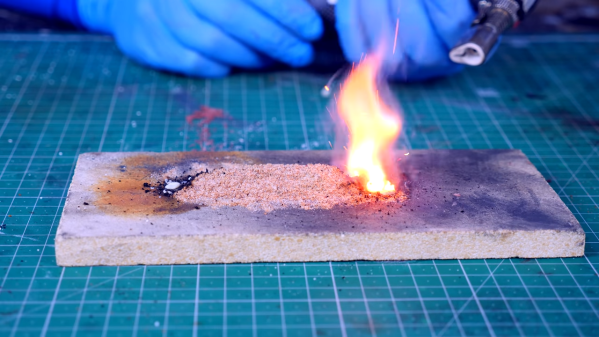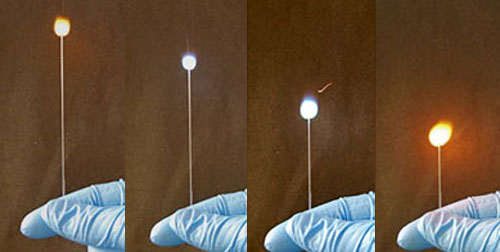[Integza] hates tomatoes, but loves rocketry. Thus, he decided to see if he could process his most-loathed fruit into some sort of rocket fuel, or at least something relatively flammable. The experiment ended poorly, but the science behind it is interesting.
The basic idea is that tomatoes are largely made up of water, sugar, and cellulose. Thus, if you nitrate that cellulose, it becomes nitrocellulose, also known as guncotton. Guncotton is was once used to replace gunpowder in firearms, though today it’s often used by magicians to create ashless flashes of flame.
To achieve this, [Integza] first attempted to make regular guncotton using a 50:50 mixture of nitric acid and sulfuric acid. The cotton was then neutralized with a baking soda and water mixture to remove excess acid, and the cotton dried. Once tested, it burned quickly as you’d expect from guncotton.
After removing the sugars from tomatoes with water, soap, hydrogen peroxide, and bleach, the tomatoes were then dried to remove excess water before also getting the acid treatment. They were then similarly neutralized, dried, and tested. One tomato did burn rather quickly, while the others merely fizzled.
One of the reasons behind this may have been due to the composition of the tomatoes. Tomatoes often consist of a mixture of cellulose, hemicellulose, and lignin, these latter components are known for producing inferior guncotton. The ramshackle preparation may have had some effect on the results. Let’s just say and it’s not advisable to work with fuming acids without protective gear and a fume hood, either.
The video’s title claims that the tomatoes were turned into rocket fuel, which is far beyond the actual results of the experiment. However, with some more advanced chemical processing, we could certainly see the fruit becoming a mite more flammable than it was. You’re probably better off just sticking to straight cotton though, for the best results. Video after the break.













